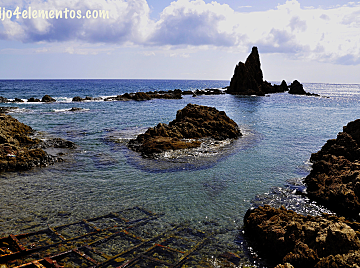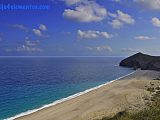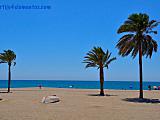Natural Park of Cabo de Gata-Níjar
We have all heard of Cabo de Gata, an Eldorado for beach tourism. Cabo de Gata is more than this, it is the first protected maritime-terrestrial space in Andalusia. Due to the contrasts between the marine, coastal and terrestrial environment, the numerous exclusive species that harbor and the characteristics of one of the driest ecosystems in Europe, this space is also internationally recognized as a Biosphere Reserve and Geopark .
Much of the ecological and scenic peculiarity of the park has its origin in the absence of climatic winter and its geological diversity.
Cabo de Gata-Níjar has an impressive coastline with steep cliffs that are followed by urban beaches such as San José and Aguamarga; magnificent natural beaches such as Mónsul and Los Genoveses; hidden and almost inaccessible coves like Carnaje and de Enmedio; and spectacular volcanic cliffs and reefs such as Punta de los Muertos and Mesa Roldán.
The poor and poorly developed soils, due to the lack of rain, harbor one of the most unique sets of flora on the European continent, with more than 1,000 exclusive species, which climb the steep volcanic slopes. Dense esparto and rosemary formations cover the plains or, in the early spring, thousands of sea daisies turn the sea cliffs yellow.
Extensive meadows of Posidonea oceanica develop on its seabed. The proliferation of this plant species, similar to a green algae, constitutes authentic submerged forests in which a great variety of underwater fauna lives: crabs, octopuses and fishes. Buried in the sand and mud plains beats a rich and varied fauna that, although small, is essential for the optimal development of the ecosystem.
Echo diving in these clean and transparent waters is a difficult experience to forget. Also walking along the surface of the water with glasses, a tube and fins (snorkel), above the Posidonia meadows with its disturbing movement is simply positively shocking.
The Cabo de Gata salt flats concentrate a large part of the park's birdlife. A multitude of birds such as avocets, stilts or plovers find food in these coastal waters. The presence of flamingos is also frequent. Throughout the year it is possible to observe more than 80 species of birds.
Places of interest in the Cabo de Gata Natural Park:
- Playa de los Muertos (Dead people Beach), read more
- Playa de los Genoveses, read more
- Playa del Mónsul, read more
- La Fabriquilla, read more
- The Sirens Reef, read more

















